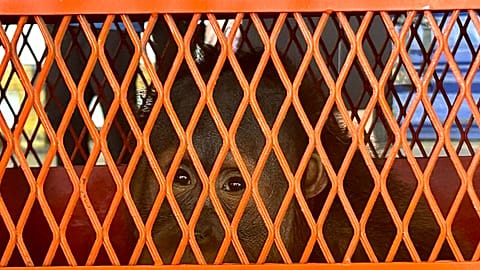The nature-based carbon sequestration technology is particularly successful at lowering nitrous oxide emissions.
Biochar could help farmers achieve net-zero greenhouse gas emissions.
A recent review of more than 200 field studies worldwide examined the impact of the nature-based carbon sequestration technology on agricultural emissions. The results were promising.
Made from organic waste, biochar is particularly successful at lowering nitrous oxide emissions, researchers from The Ohio State University in the US found.
The study, published in the scientific Journal of Environmental Quality, highlights other benefits of biochar, including its ability to optimise soil.
The authors hope their research will help promote the commercialised use and adoption of biochar in farming and forestry.
Agriculture, forestry and land use accounts for over 18 per cent of global greenhouse emissions, according to our World in Data, with 3.5 per cent of this attributed to crop burning.
What is biochar?
Biochar is created when biomass, such as fallen tree branches and crop residue, is heated at 200-400°C with little or no oxygen, in a process known as pyrolysis.
This thermally decomposes the organic waste into a solid residue of carbon, known as biochar. Storing the carbon in a stable solid form prevents it from breaking down. It can be sequestered in soil for hundreds or thousands of years.
When farmers simply leave crop residue on the field to decompose, only about 10 to 20 per cent of the residue carbon is recycled into soil. By converting it into biochar and applying it to the field, around 50 per cent is stored in stable forms.
This process mitigates emissions from organic waste that is burned or left to decompose, both of which produce greenhouse gases.
Biochar can also remove greenhouse gases directly from the atmosphere through uptake by plants.
Additionally, it can be used as a soil additive to improve drainage, aeration, plant health, crop yield, and water and nutrient retention.
How effective is biochar at reducing farming emissions?
Nitrous oxide, methane and carbon dioxide are heat-trapping gases that cause the Earth’s atmosphere to warm.
By cutting emissions at the source while enhancing the carbon sink that absorbs them - in this case, the soil carbon pool - farmers can achieve net-zero or negative emissions, the study finds.
The researchers found that, on average, the use of biochar lowered emissions of nitrous oxide by around 18 per cent and methane by three per cent.
While biochar alone was not effective at reducing carbon dioxide, it did help when combined with commercial nitrogen fertiliser or organic materials like manure or compost.
Biochar also has the potential to reduce greenhouse gas emissions from soils, but longer-term work is needed to examine this, the study notes.
What are the barriers to biochar adoption?
Currently, biochar is expensive - it costs from €930 to €3,065 per metric tonne.
There is also limited evidence on its benefits and stability, due to a lack of large-scale, long-term studies. It has therefore not yet been recognised as a method for generating carbon offsets.
But biochar’s ability to sequester large amounts of greenhouse gases, along with its additional benefits for farmers, means it deserves to be reevaluated as a tool for climate change mitigation, the study’s authors argue.
“If we can convince farmers that converting biomass to biochar is good for the long-term sustainability of soils, the economy, and good for the environment, then we'll be able to see wide adoption of this technology,” says lead author Raj Shrestha.


















